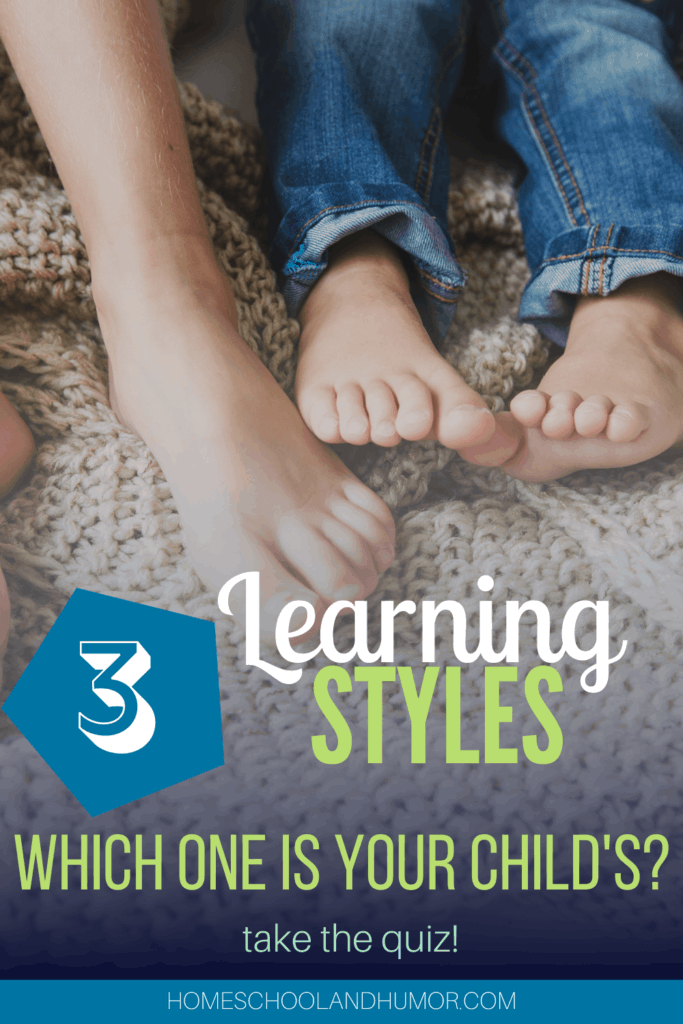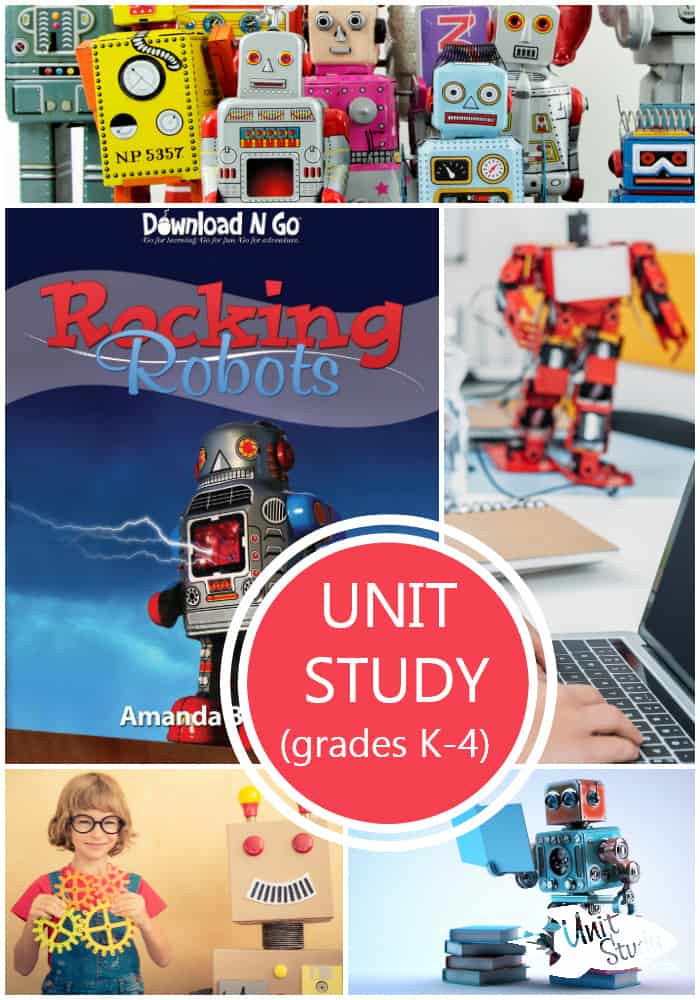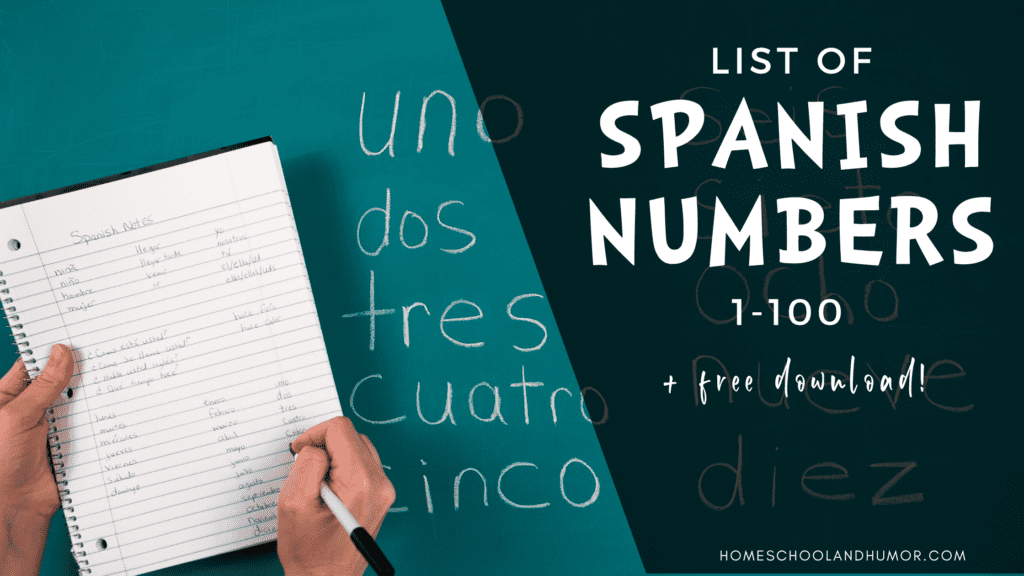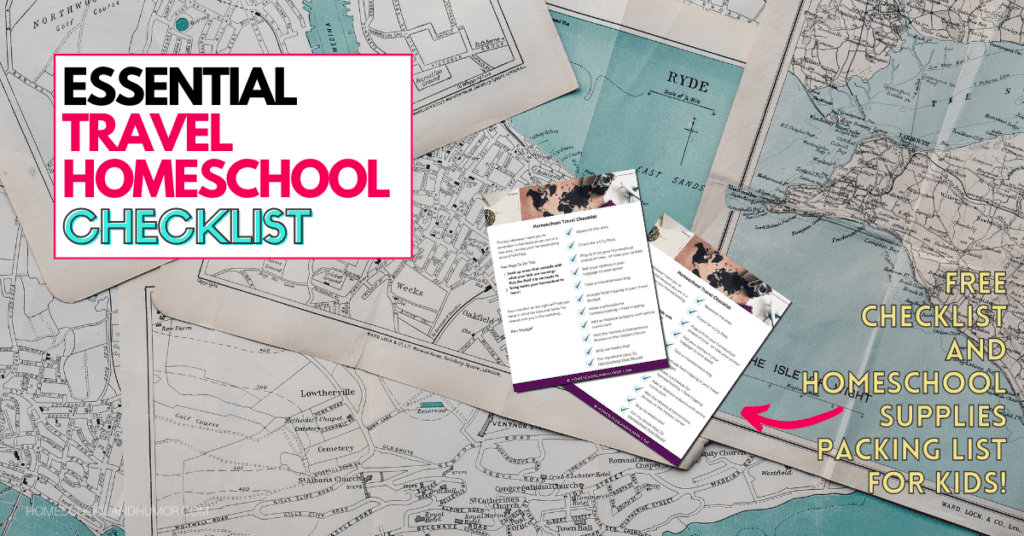Every person has a unique learning style, particularly children because they are developing at a rapid pace and constantly in ‘learning mode’. The homeschool goal shouldn’t have to be “no tears today!” It goes without saying, but your goal should probably include enrichment of some sort. And in order to effectively do that, you gotta know the different options of children learning styles.
Preparation – Laying the Foundation Pt. 1: Learning Styles
See the list of all lessons in this homeschool series here.
We all know homeschooling takes time. It takes ‘practice’ all year long to even get used to homeschool your first year. It takes a while to create a family rhythm with your children. But don’t start off your homeschool experience with unhappy kids! When you know how they learn, you’ll be surprised at how stress-free homeschooling becomes and how much more fun it is for both you and your children.
We all learn in a variety of ways and each time your child is just “not getting it” you may need to re-evaluate and approach it in a different way.
But there’s no failure in homeschool. Because your child carries around how they learn throughout the day every day, and not just during school time. You can glean from these moments on how best your child receives information and/or applies information, or you can simply take a quiz to find out their learning style!
Take the learning style quiz at the bottom of this post! And if you want jump to the bottom: skip the post and go straight to the quiz.

Disclaimer: Affiliate links are within this post for your convenience. Here’s our disclosure policy.
How I Discovered My Kids’ Learning Styles – the hard way
Here’s a quick, backwards personal story for you about our experiences with learning styles. I have 3 kids, two of which are elementary age. When we first started out homeschooling, I would use math manipulatives to teach my son about regrouping – the borrowing and carrying over with addition and subtraction. But for some reason, he just wasn’t getting it, and I didn’t know why.
See, the year prior he was in public school. But during that year he just flat out would NOT do the work. It was a troublesome time, hence the reason we are homeschooling now.
Well, because he wasn’t really grasping regrouping concepts, I figured it was because he just didn’t learn it in school. I didn’t even ask him, for some reason.
Fast Forward to Next Year
Fast forward to the next homeschool year. Here we are again looking at regrouping. I give my son a fun-looking worksheet (Master Books – Math Lessons of a Living Education), without any manipulatives, and did you know, this kid just flew through those problems!
I was so shocked. I mean, he couldn’t even begin to do these problems last year. What was so different? Well, I learned he does math BEST with a simple pencil and worksheet! Imagine that. And here I thought all kids would benefit and learn best with manipulatives.
One more. You have my son’s story, now my daughter’s. Because of Daniel’s quick grasp with math worksheets I was more like “the heck with math manipulatives”. So when it came time for my daughter to learn math, she was slowly getting it, but much, much more slower than Daniel was.

We worked with worksheets all. year. long. And I just thought that maybe she just needs more individual one on one time going over the math lessons.
But then I noticed, two years later, how she was still counting on her fingers. And she was counting simple concepts, like 5 plus 8 or 3 plus 7. I struggled to understand how she hadn’t memorized her mental math.
So I grabbed Math-U-See’s AIM program. I heard of Math-U-See and a lot of homeschool moms love it, so I figured I’d give it a go. The AIM program helps kids visually see math via colors and with manipulatives and posters. They even provide short video lessons on the concepts. And the whole point of this program is for kids to be able to memorize their fact families and mental math.
After just 3 lessons, I saw a huge difference. And nowadays, she doesn’t count on her fingers and she can think quickly about those math facts! She can master math with the best of them – but as long as she has manipulatives to learn the more difficult lessons. 😉
So what did I learn about both of my kids? I learned that my son is a Visual Learner / Reading/Writing Learner, and that my daughter is a kinesthetic learner when it comes to math.
And had I discovered their learning styles sooner, I could hahve saved 2-3 years of frustrations and growing self-condemnation! To think that one ‘just can’t get it’ over the course of a few years, it’s natural to feel a little under-confident about math and then learning in general.
However, nowadays, I can proudly say math is my son’s absolutely favorite subject and he’s such a shining star. And Zoey can confidently and smoothly learn math concepts usually in just one sitting! Phew!
What is a learning style, exactly?
Like most things, there isn’t just one set learning style for each child. Usually, there are about 1 or 2 learning styles that your child leans towards more than the others. When you find out just how best your child learns, you will be able to customize your child’s homeschool education pretty dang close to perfect. Learning styles also help you match your child’s learning style with a curriculum that supports how they learn.
Take Zoey’s story, for example. Zoey is a hands-on learner, meaning she is a kinesthetic learner. A math curriculum that is just a workbook will not be the best fit for Zoey because she needs to learn math by working with her hands. So a math curriculum with math manipulatives works best for her learning style. Therefore, I will only go out and seek math curriculums that offer hands-on learning.
Children learning styles are a way that your child learns. And it doesn’t even have to be in homeschooling. It can be in many other areas of life.

The Three Common Learning Styles
When I wanted to know what my kids’ learning styles were, I knew of a few styles but I didn’t know all of them. And if you’ve research Google about learning styles you will find articles that actually have different learning styles explained.
We’ll go over VAK (Visual Auditory Kinesthetic). Now some people also include Reading/Writing a learning style, making it VARK instead of VAK. And then others will include even more types of styles.
But for this lesson in the How To Start Homeschooling series, I’m all about keeping things simple. So we’ll just go over the Visual, Auditory, and Kinesthetic learning styles. Your child will land in one of these anyway, so in my opinion, there’s no need to break it down even further. (But you can break it down even further if you want – just google learning styles.)
Is Your Child A Visual Learner?
Within my Mac’s Dictionary, I think from Dictionary.com, the definition of a visual learner is:
Visual learning is one of the three basic types of learning styles described in the Fleming VAK/VARK model in which a learner needs to see information in order to process it. Visual Learners can utilize graphs, charts, maps, diagrams, and other forms of visual stimulation to effectively acquire information. The Fleming VAK/VARK model also includes kinesthetic learning and auditory learning.
How to know if your child’s a visual learner? Well, they work best with basic worksheets, workbooks without the crazy bright colors everywhere, video lessons of any kind, charts and diagrams, and basically any kind of representation or delivery of information that they can see. They like to sit back and watch before they act on it. They like to see you give an example, one where you write down and they can literally see what you mean. Many visual learners like to read too! And picture books work great to elaborate on a topic or concept.
Homeschool Resources That Work Best for Visual Learners
There are a number of resources and curriculum that meets the needs of visual learners with one of these children learning styles. Here are just a few and some of my favorites:
- The Magic School Bus series has a ton of videos in several different subjects that work well with visual learners!
- Journey Homeschool Academy is a science curriculum that uses video lessons and worksheets to teach elementary and upper school kids biology and/or astronomy.
- NatureGlo’s Science MathArt & Science Curriculum Bundle has over 25 science courses across different topics, all with video lessons and printable study guides.
- Institute for Excellence in Writing (IEW) is an amazing, award-winning writing curriculum for all ages that uses video lessons with the chance to attend live video lessons and even attend in person throughout the country! You get physical components mailed to you as well, such as a binder, dividers, and worktext pages.
- Math Mammoth is the math curriculum that my son uses and thrives on. With just basic worksheets, the curriculum still teaches the lessons but on the worksheets. It’s not gussied up with fancy bright colors either, just math problems, puzzles, and games. It also includes online resources for math games and worksheet builders.
- Beautiful Feet is a great, literature-rich history program that uses books throughout the curriculum to teach history. I decided to try this history curriculum this year actually because I wanted our history curriculum to be more story-based. Beautiful feet provided book titles and questions for the books for all your history lessons. It also has the books you can purchase that go with the lessons too!


Is Your Child An Auditory Learner?
The definition of an auditory learner is….
Auditory learning is a learning style in which a person learns through listening. An auditory learner depends on listening and speaking as a main way of learning. Auditory learners must be able to hear what is being said in order to understand and may have difficulty with instructions that are drawn but if the writing is in a logical order it can be easier to understand. They also use their listening and repeating skills to` sort through the information that is sent to them.
You know if your child is an auditory learner when they learn best from simply hearing something! Remove distractions since they’re stimulated by what they hear. Of course, all learners should have distractions removed though. But an auditory learn works best in quiet places without a ton of noise around them. When teaching lessons, it’s best if you read out loud to these types of learners rather than reading it themselves.
Repeating things just after they hear them and listening closely helps auditory learners process information. Of course, they learn through listening and they use listening and speaking as their main source of learning. Have your learner tell a sibling all about their lesson – they’ll retain the information so much better. Also, instead of quiet independent reading, have your auditory learner read the book out loud instead.
Auditory learners, like visual learners, thrive on video lessons. They also do well on audible lessons, like Memoria Press’s Prima Latina Latin audio and video lessons or Story of the World’s audio lessons. If you can. strive to include an auditory component in your lessons for your auditory learner.
Homeschool Resources That Work Best for Auditory Learners
There are plenty of resources and curriculum for visual learners. Pay attention to the commonalities each of them have in order to select a resource or curriculum that meets your auditory learner’s needs. Here’s a few to get your gears turning:
- Story of the World – I did already mention this one but it’s worth mentioning again! This is a wonderful, story-based history curriculum with a classical approach that goes in chronological order. It has audio lessons with each of the four books, narrated by an award-winning narrator.
- Memoria Press is classical education with several subjects that include both DVD lessons and Audio lessons! They have all subjects including Latin, which is the one we are taking. You can actually read our Latin review here.
- Apologia is a Christ-centered curriculum, also wonderful, and has all subjects, including Christian series. I have their Exploring Astronomy curriculum for elementary as well as their first course in the Who is God? series. Their courses also have audio lesson options available! These audio lessons aren’t boring either; they’re pretty captivating and go by the textbook for your kids to follow along.
- SchoolhouseTeachers is one of my favorite homeschool resources and we use it all. the. time. Just one membership covers all grades and all subjects! They have hundreds of courses available. It’s literally the only thing ever you need to buy for homeschool for ALL of your kids – whether you have 1 or 10! They have video lessons and audio lessons, along with interactive lessons! Of course, they also have lessons with study guides, worktexts, and even include the World Encyclopedia for all members. And that encyclopedia is extremely amazing!
- Audible – Of course I have to include Audible since it has so many audio lessons for kids! They even have a new educational component called Story Book.
- Netflix has tons of educational videos available. Tons! They also have incredible documentary stories as well as information-based programs. We use Netflix often to link up a movie, show, or documentary with the topics we’re currently on.
- Prime Video is also a great option for watching educational videos for auditory learners. Like Netflix, it has amazing movies, shows, and documentaries. Oftentimes if Netflix doesn’t have it, Prime Video does! And if you get an annual Amazon Prime account, not only do you get free 2-day shipping, but you also get Prime Video included for free. And now they are also taking customers of EBT and Medicaid with I think 40 to 60% off the normal price (at the time of this writing).
- Math-U-See is a math program that also has a digital toolbox with video lessons that coincide with their workbook lessons.
- Reading Eggs is an award-winning reading program that now has phonics included. All three of my kids (including my toddler) have learned so much through Reading Eggs. I’ve witnessed my toddler learn in strides! You can actually read the review here.
Is Your Child A Kinesthetic Learner?
The definition of a kinesthetic learner is:
Kinesthetic learning, kinaesthetic learning, or tactile learning is a learning style in which learning takes place by the students carrying out physical activities, rather than listening to a lecture or watching demonstrations. As cited by Favre, Dunn and Dunn define kinesthetic learners as students who require whole-body movement to process new and difficult information.
Kinesthetic learners are your primary hands-on learners! They like to build and construct with their hands, so try to include some hands-on elements in your lessons if you can. They learn best with they can touch, hold, and feel in order to explore their lesson. Textbooks and workbooks aren’t ideal for these learners because their minds will start to wander – it won’t hold their attention. They also might be the one who bounces their leg up and down throughout a lesson, can’t stop fidgeting, never seems to sit on their bottom in a chair, or is always doing something with their hands.
They need to be doing something in order to really process and understand information. Hearing it and seeing is not enough for kinesthetic learners. That’s why Art projects, History projects, and Science experiments are usually a kinesthetic learner’s favorite subjects. Even computer technology courses because they’re constantly moving their fingers. These sensory learners are your busy bodies.
Kinesthetic learners don’t want to just read about the parts of an animal, they want to dissect it! They want to touch things and tear them apart in order to see how things work.
They’re also very affectionate people who love cuddles and hugs. They also love roughhousing and running around, and outside recess or P.E. could very possibly be their favorite time of day! Just like visual and auditory learners, kinesthetic learners are also thinkers. They are extremely creative and actionable.
Homeschool Resources That Work Best for Kinesthetic Learners
There are SO MANY resources available for these hands-on, kinesthetic learners! Several Montessori-based curriculum use hands-on resources, so you can very well start there. Here are some other resources for kinesthetic learners (that I also found helper for my kinesthetic learner!):
- Math-U-See is an amazing math program available for all levels. Here’s a ton of Math-U-See resources you can check out. Math-U-See uses math manipulatives to help children understand math on a hands-on level. And believe it or not, this really makes a difference with your kinesthetic learner!
- ShillerLearning is a Montessori-based curriculum with both physical and digital attributes of hands-on learning. They have a great math program too for kinesthetic learners!
- All About Learning Press has an amazing, award-winning reading and spelling program! They use tiles and other hands-on manipulatives to help children learn how to both read and spelling. Their spelling program is called All About Spelling and their reading program is All About Reading.
- WriteShop is a wonderful hands-on writing program that helps kids learn how to write.
- JA-RU Stretchy Balls Stress Toys for Kids – I know it sounds silly but when your kinesthetic learner can’t seem to sit still, give them this squeezable ball so they can be doing something with their hands while they’re doing a lesson! It works!
- UnitStudy.com by Amanda Bennett offers pretty much a unit study on pretty much any subject! These are great for both kinesthetic and visual learners since you can be drawing and/or building.
How To Discover Your Child’s Homeschool Learning Style
By discovering your child’s learning style, you’ll be able to cherry pick your children’s education to suit their individual needs and learning styles. All by knowing their learning style!
Not only that, but you’ll also save a ton of money. Imagine buying curriculum that doesn’t work with your kids. Either they don’t understand or they have tears every day from it or it takes a really, really long time to do one lesson for your child to halfway understand the concept. These are indicators that you have the wrong curriculum for your child.
Just use my resources/curriculum list for each learning style mentioned earlier. Use those curriculums or use them as a guide. Notice the commonality each one has. Some websites even declare what learning styles their curriculum cater to! Take heed of these notes.
But I urge you, don’t randomly get a curriculum because you think it’s cool or it’s currently trending or that you just always wanted to try it out. It’s going to be a waste of money and time if it doesn’t work with your child – and work well like other curriculums could that match his or her learning style.
Learning Styles Quiz!
Use this lesson post to guide your way into discovering your child’s learning style and take this quiz! Don’t forget to grab your Learning Styles Lesson Ideas Sheets below the quiz!

Do you have any other curriculum suggestions for particular learning styles? Put them in the comments below!
PIN FOR LATER ⬇️ ⬇️

- 111 Best All-Time Middle School Movies List (In Categories!) - April 26, 2024
- Top 16 Indoor Games for Teens That Won’t Turn Your House into a War Zone - January 29, 2024
- Free Crafty Printable Christmas Countdown Calendars For Kids - December 17, 2023













Pingback: October Home School Round Up {Homeschool Collection} - Homeschool Review Crew
I love that there are so many options for our children that we can take based upon their learning styles. I am often telling my own children that I need to read something rather than have them read the questions aloud to me. I do much better reading than listening yet I learn so much by listening to lectures.
I hear ya about that. I thought I knew my kids’ styles, back when I even started homeschooling, but it wasn’t until we were actually in the thick of it when I realized there really was something to this ‘learning style’ thing!
My daughter definitely is a visual learner. Anything she sees somehow she remembers it.
Gosh, I’m jealous! What a wonderful gift!